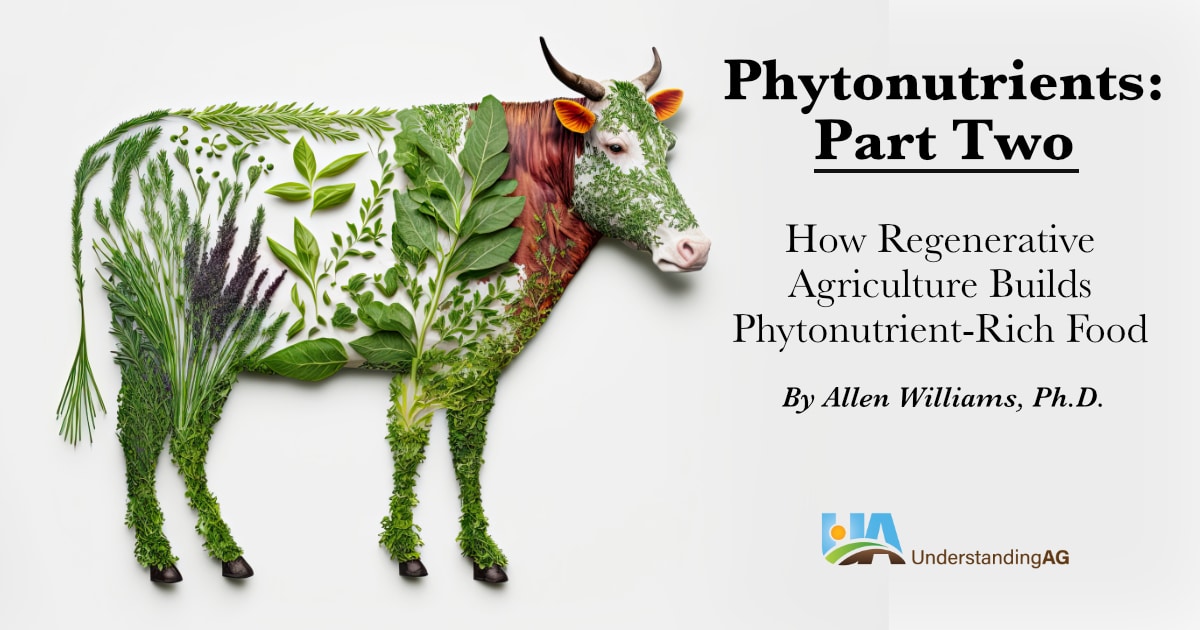
To understand regenerative agriculture, you must have a working definition. Regenerative Agriculture is defined as:
Farming and ranching in synchrony with nature and the four ecosystem processes to repair, rebuild, restore and revitalize ecosystem function, starting with life beneath the soil and expanding to life above.
This is most effectively accomplished by farmers and ranchers properly and intentionally implementing what Understanding Ag calls the 6-3-4TM, which is comprised of the Six Principles of Soil Health, the Three Rules of Adaptive Stewardship, and the Four Ecosystem Processes.
When we purposefully implement the basic principles of regenerative agriculture we build a thriving, vibrant world of living, breathing microbes underneath the soil surface that play a definitive role in the phytonutrient richness of all our foods.
Regenerative agriculture allows us to take degraded pieces of land and revitalize them so they can once again become highly productive; grow phytonutrient-rich food; support thriving beneficial insect, pollinator, bird and wildlife populations; sequester carbon; and mitigate greenhouse gas emissions (GHG). These goals are the principal outcomes of our vision and mission.
There is a great quote by W.C. Lowdermilk in his book Conquest of the Land Through 7000 Years. It goes like this: “The land does not lie; it bears a record of what men write on it… A record that is easy to read by those who understand the simple language of the land.”
Lowdermilk is saying that our management is written on the tapestry of the land. How we manage the land not only matters for the life that relies on that land, but it also matters for us because our health is ultimately determined by what the land produces. With regenerative agriculture, what is good for facilitating abundant life in our ecosystems is also good for our ultimate health. In contrast, conventional agriculture conflicts with thriving ecosystems and produces food that has few of the phytonutrients (as well as other nutrients) that are essential to our health and longevity.
The research Understanding Ag is involved in starts with measuring life in the soil and includes assessing the level of phytonutrients in the plants growing in that soil that our animals eat. And what those animals eat ultimately determines the level of phytonutrients in the foods we eat. In the final part of this series, I will be detailing why and how that matters for you. Stay tuned.
